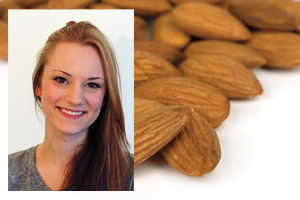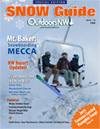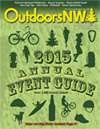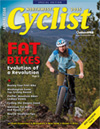Health Nut: Prevent Sore Muscles Without Sacrificing Results

By Kelly Turner
Muscle soreness can vary in degree from a slight discomfort to an inability to move, but any way you slice it, it’s not fun. Even the elite aren’t immune. Sore muscles can cause the biggest bodybuilder to cry at the mere sight of a toilet seat.
Common misconceptions
There are a lot of misconceptions about muscle soreness because in all honesty, it is not 100-percent understood. For example, getting sore doesn’t mean you are out of shape, just like not being sore after a workout doesn’t mean the workout wasn’t effective. You may expect to be sore from a workout and not hear a peep from your body or you may wake up sore in areas you don’t even remember using. As with most things, everybody and every body is different.
Is lactic acid the culprit?
The most common misconception is that lactic acid is to blame for muscle soreness, but new research shows this isn’t the case. So, why do we get sore in the first place? Let’s use a bicep curl as an example.
Most people think the upward curling motion, the concentric contraction or the motion that makes the angle of the elbow joint smaller is what makes you stronger—but in actuality it’s the downward motion, eccentric contraction and angle of the joint becoming larger that really produce results.
(Yes, this means those meatheads hucking up their weights then dropping them on the floor aren’t doing themselves, or their backs, any favors. But, you try telling them that.)
Even though it may feel as if you are simply working with gravity on the eccentric movement, you are moving slower than gravity, which means the muscle is still contracting and working against gravity to slow the eccentric contraction down.
This pull in opposite directions tears the tiny fibers in your muscles apart, which is why you start to get shaky and lose strength until you eventually max out. The more resistance you fight against (e.g. gravity, plus a 10-pound dumbbell), the harder your muscle contracts and the more those fibers rip.
When the muscle fibers heal, they heal stronger and closer together than before, like scar tissue. That is why you develop stronger, bigger muscles after consistent strength training. In the meantime, however, you have quite literally injured yourself.
Muscle soreness is all a matter of degree. Too much ripping and you pull a muscle or tear it completely. Not enough ripping and you won’t see strength gains. This is why it is important to find the right weight for you—one that will produce results but not injure you completely.
Prevent and ease pain
Knowing where muscle soreness comes from is all well and good, but it doesn’t make you want to scream any less at the sight of stairs. So, what can you do to prevent or ease muscle soreness without sacrificing results?
Before your workout: Warm up for 5–10 minutes to get your muscles loose and ready for the workout ahead. Remember, your muscles are like taffy. Warm taffy stretches while cold taffy snaps.
During your workout: Be sure you are lifting weights that are heavy enough to produce results, but aren’t so heavy they shoot you right past muscle breakdown into muscle damage. If you have to sacrifice form to lift the weight you picked, it’s
too much.
After your workout: Stretch to elongate the tightened and healing muscle fibers, and to give you temporary relief afterward, even if the act of stretching is uncomfortable while sore. Also, make sure you are eating enough protein, as protein’s main function is to build and repair muscle. If your soreness is really bad, ice the affected area to lessen inflammation and pain.
Rest muscle groups at least 48 hours in between workouts to give them enough time to safely heal. A heart-pumping cardio workout will also increase blood flow and promote faster muscle healing.
It’s important to remember that muscle soreness is a necessary side effect of exercise, like sweating, so while it is never fun, you shouldn’t seek to avoid it completely or your results may suffer.
Kelly Turner is a Seattle-based ACE certified personal trainer and fitness writer. You can contact her at KellyTurnerFitness@gmail.com. Twitter: @KellyTurnerFit Instagram: KellyTurner26



